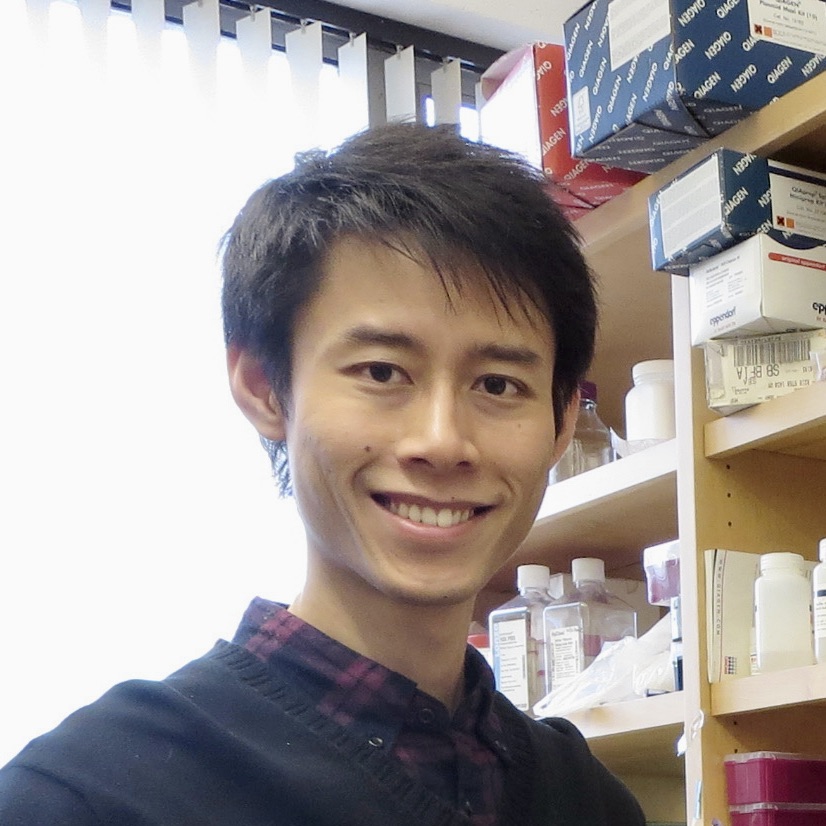May 2025 | Volume 26 No. 2
Seeing Red
Listen to this article:
A collaboration between researchers at HKU’s School of Biological Sciences and BIOPOLIS’ Research Centre in Biodiversity and Genetic Resources (BIOPOLIS-CIBIO) in Portugal have discovered the genetic ‘switch’ that determines the red colour of a parrot’s plumage.
“Parrots are unique in their way they produce colourful plumage,” said Professor Simon Sin Yung-wa, co-author of the paper which has been published in Science. “Different from all other birds, parrots use a unique polyene pigment, which is called psittacofulvin, to produce the colours from yellow and orange to red.”
The genetic basis of parrot pigmentation was only discovered in 2017, when a study on budgerigars found an enzyme for yellow psittacofulvin production. Most other birds need to obtain dietary carotenoids to colour their feathers from red to yellow, but scientists have known for decades that parrots have the ability to endogenously synthesise their unique pigments, psittacofulvins, to colour their feathers.
“However, until our study, we still did not know the underlying molecular mechanism – that is, which enzyme(s) or biochemical pathway produces the red pigmentation in parrots,” said Professor Sin. They found that only one protein controlled the colour difference in the lories, aldehyde dehydrogenase 3 family member A2 (ALDH3A2), and the higher the expression level of ALDH3A2, the more red aldehyde psittacofulvins are converted into the yellow carboxyl form.
The study was undertaken on three different types of birds – the dusky lory (Pseudeos fuscata), a parrot species called the rosy-faced lovebird (Agapornis roseicollis) and the budgerigar (Melopsittacus undulatus). The methodology utilised was a combination of chemical analyses, genomic and transcriptomic investigations, single-cell analysis, and biochemical assays.
Research methodology
“We first performed chemical analyses to show that red and yellow psittacofulvins are two different forms of the pigment, which are aldehydes and carboxylic acids, respectively,” said Professor Sin. “We then conducted a genomic study on the dusky lory. The dusky lory has a naturally occurring red or yellow form, a type of colour polymorphism that is very rare. It serves as a good model to identify the difference in the genomes between the red and yellow dusky lories. By performing a genetic mapping analysis, we identified a genomic region with the ALDH3A2 gene to be highly associated with the colour polymorphism.”
They also performed transcriptomic analysis on the feathers of the rosy-faced lovebird. This parrot species displays both green plumage (that is, plumage containing yellow psittacofulvin) and red plumage patches, and therefore good for studying the genes determining the colour difference between red and yellow psittacofulvin-containing plumage patches to help facilitate the scientists’ understanding of the general role of ALDH3A2 in other parrot species.
“We found that the same aldehyde dehydrogenase gene expressed at a high level in yellow psittacofulvin-containing feathers, where the red psittacofulvins were converted into yellow forms,” explained Professor Sin.
The third bird species, the budgerigar, is a common pet parrot that has yellow psittacofulvin-containing plumage almost covering the whole body. “We used it to study how individual cells turn different genes on and off during feather development,” he said.
Single-cell RNA sequencing showed that ALDH3A2 is expressed in late-differentiating keratinocytes in growing feather follicles, which are cells important for psittacofulvin metabolism.
Finally, they conducted a biochemical assay in yeast to validate the role of ALDH3A2 in psittacofulvin biosynthesis. They found the action of this protein is sufficient for the conversion of red pigments into yellow.
Technological advances
The researchers would not have been able to make the new discovery without the latest advances in technology. “New biotechnology assisted us to achieve something that decades ago could only be dreamed of,” said Professor Sin.
“Single-cell technology provided unprecedented resolution at individual cell level, making it possible to study what genes are expressed and how they were turned on and off. Also, high-throughput technology allowed us to sequence multiple genomes and transcriptomes within a reasonable budget and timeframe.”
This is the first collaboration between CIBIO and the HKU team and it came about after the two labs discovered they were each trying to solve the same mystery.
“In the middle of the study, we somehow learnt about each other’s work, and that our data were complementary,” said Professor Sin. “We felt we could support each other’s work and make the result more comprehensive and compelling. It proved to be a successful collaboration and shows ‘if you want to go far, go together.’”
The teams aim to continue seeking new information in this field. “There are still so many unknowns about how different species evolved and developed their plumage colour,” he said. “My team and I will keep going on this journey to decipher the mystery behind bird colouration. Through this process, we will also gain more insights into how evolution creates complexity and diversity in the natural world.”
Single-cell technology provided unprecedented resolution at individual cell level, making it possible to study what genes are expressed and how they were turned on and off.

Professor Simon Sin Yung-wa

